Ever marveled at the rich luster of a cedar wood piece? Curious about achieving this finish with Tung oil? Let’s explore this secret of woodworking magic together!

Tung oil is an exceptional one of the best natural eco-friendly oil finishes in the woodworking world.
It has some exceptional qualities than other finishing oils and is able to apply to many kinds of wood with simple finishing methods.
One day when I was working with cedar, I was curious about finishing it with tung oil for durability.
So, I did some research and here’s what I’ve found about using Tung oil on cedar,
Yes, you can use tung oil on cedar with no issue. Tung oil makes a protective film over cedar with a natural look. Pure tung oil gives a light yellow color to cedar while dark tung oil darkens the cedarwood. Apply tung oil on cedar after a light sanding and let it dry and cure properly.
But there’s more to know about using tung oil on cedar.

So, in this article, I’ll examine whether can you use tung oil on cedar and how to apply tung oil on cedar properly.
Furthermore, I’ll answer some frequently asked questions as well.
Let’s jump in!

Can You Use Tung Oil on Cedar?
Tung oil works perfectly on cedar wood. After curing on cedar wood, tung oil gives a wet fresh look to the surface.
Tung oil is kind of like the look of having poured honey over wood. It is got nice reflection to it and brings out the grain.
Tung oil can use for both indoor and outdoor cedar woodworks and furniture. It is a solid finish as varnish.
Tung oil is mostly used for,
- Cedar decks
- Cedar panels
- Frames
- Siding
- Fences
- Musical instruments
When you apply tung oil on cedar, make sure to let it cure for around 6 – 7 days. Because oil finishes do not cure quickly.
Once you got the white residue over the cedar wood surface, you’re good to go for the next step because white residue occurs when tung oil is cured properly.
Tung oil tends to react with atmospheric air and makes polymerization reactions happen. As a result of that white residue will occur when it is going bad.
Tung oil makes a protective film over cedar and protects the wood from environmental elements while giving a nice fresh appearance.
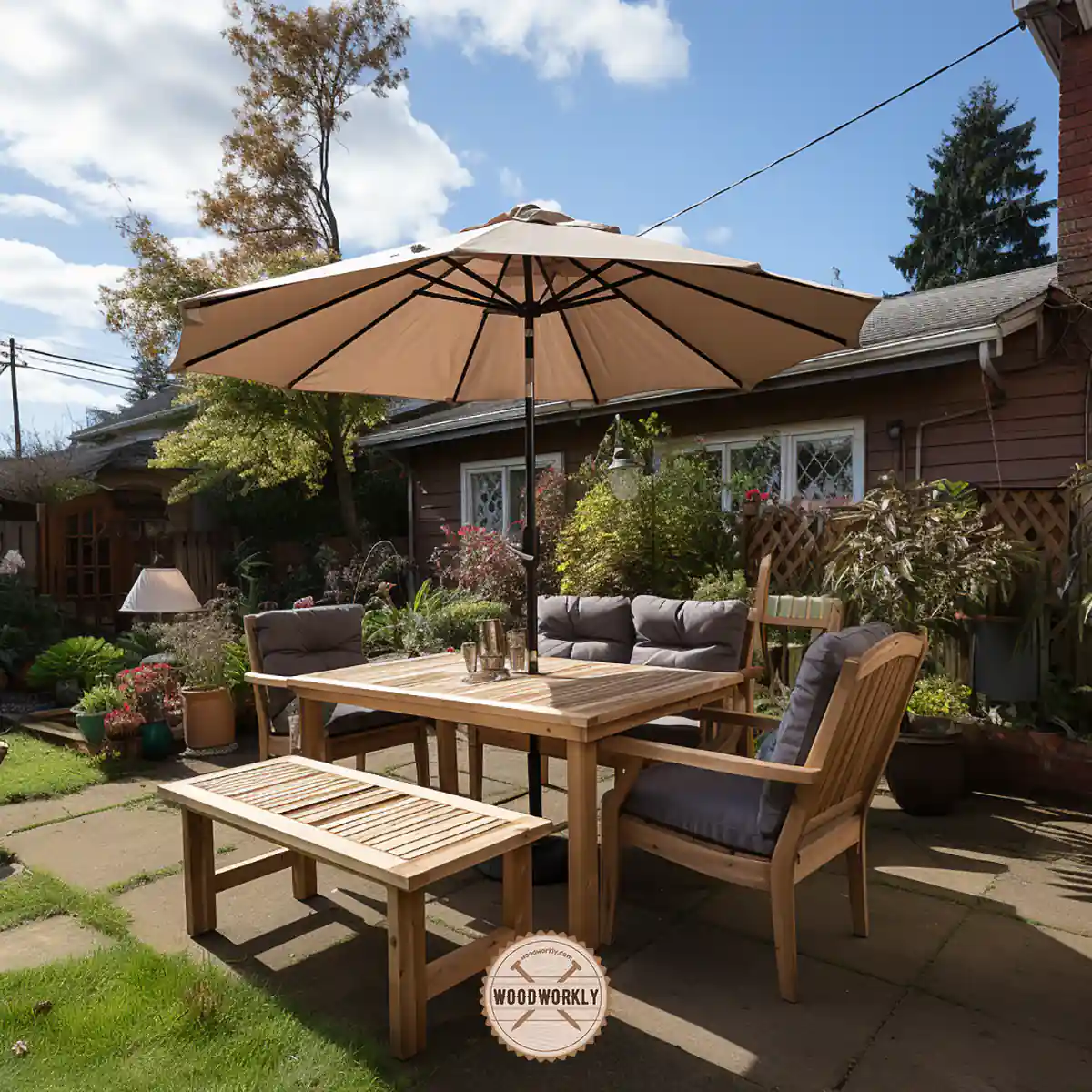
Advantages Of Using Tung Oil on Cedar
- Tung oil is non-toxic and food safe. You can use a tung oil finish for kitchen utensils, bowls, cups, and children’s toys made of cedar.
- Tung oil is easy to apply to cedar
- Waterproof oil
- Attractive in color
- Acid and alcohol resistant
- High elasticity
- Eco friendly
Now you have a clear idea of why you should use tung oil on cedar and what benefits you’ll get due to the surprising qualities of tung oil.
Here’re the things you need to arrange before the application of tung oil on cedar.
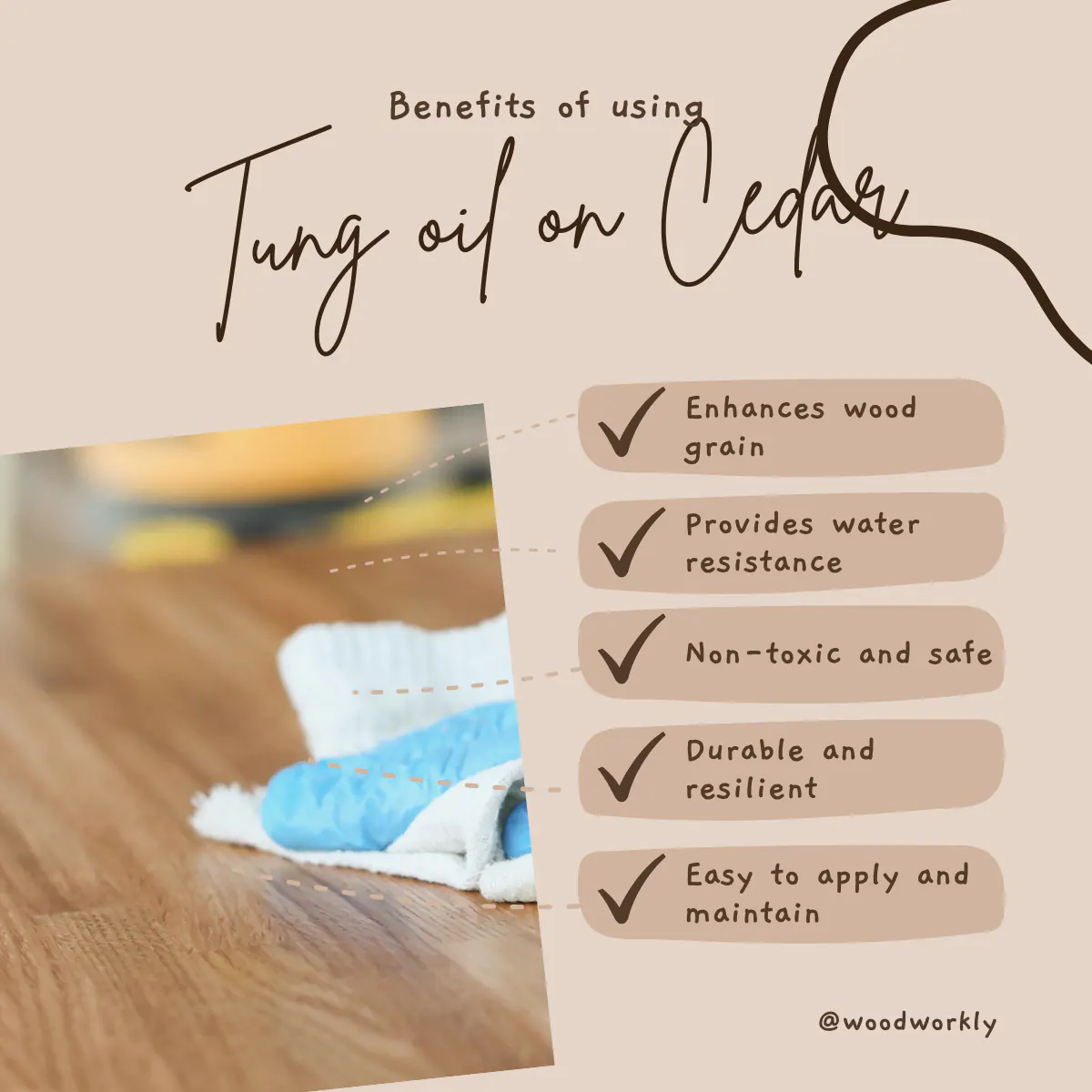
The Supplies You Will Need to Use Tung Oil on Cedar
- Tung oil (Pure or Dark)
- Mineral spirit
- Sandpapers (120 – 150 – 220)
- Abrasive finishing pads
- Plastic cup or glass jar
- Tack cloth
- Rags
- A bristle brush, sponge brush, or lint-free rag
- Latex gloves
Grab the above tools and supplies from a quality manufacturer and get ready to apply tung oil on cedar.
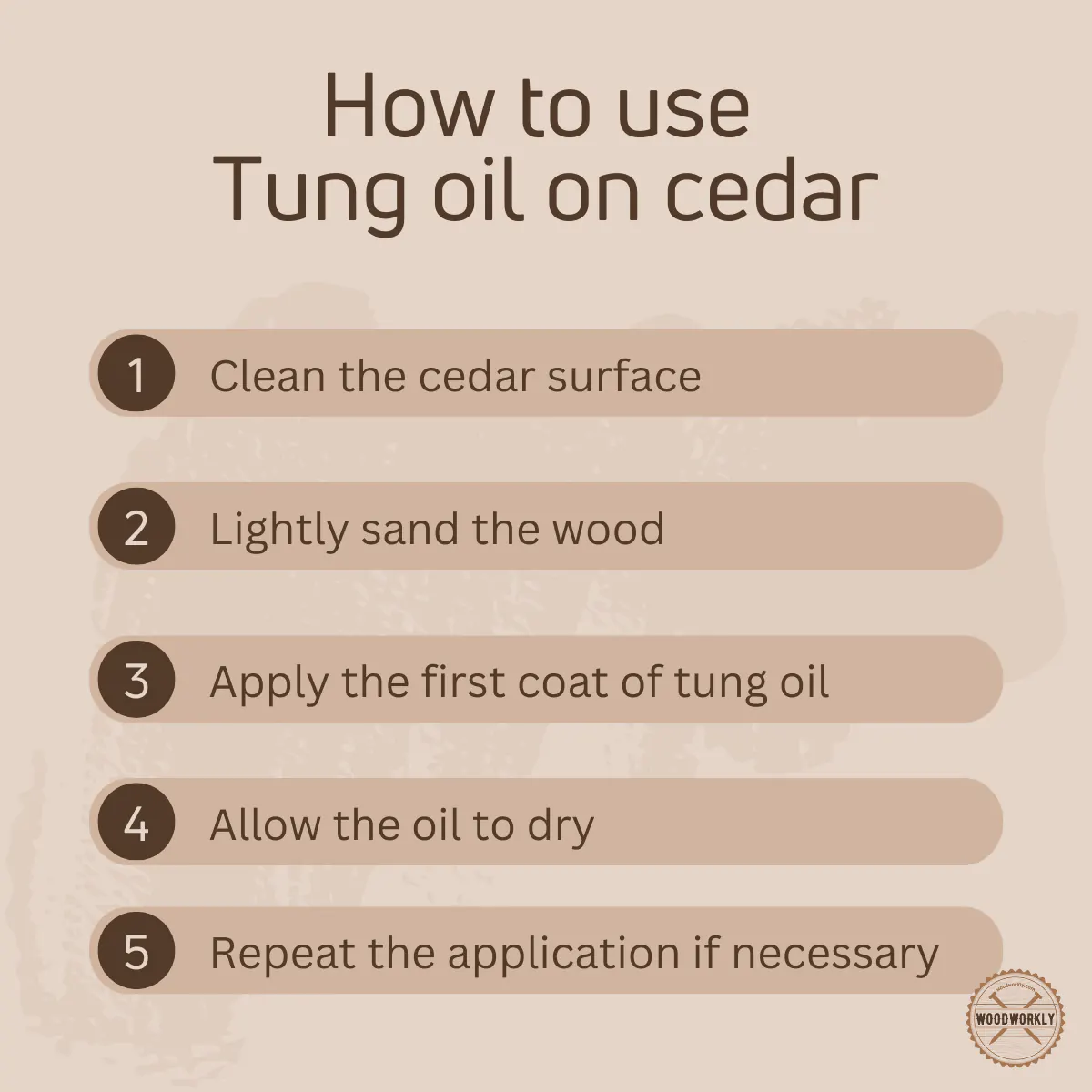
How To Apply Tung Oil on Cedar?
Applying tung oil on cedar is easy. Cedar is a porous wood that can accept tung oil very well if applied correctly.
When the oil is drying after the application it absorbs into the pores surface of cedar giving the look you want.
There’re several ways you can do this.
- Apply tung oil using a brush
- Spray tung oil by mixing it with mineral spirit
The easiest method of applying tung oil is by using a brush which we discuss here.
Here’re the steps you need to follow when applying tung oil on cedar,
- Prepare the surface
- Thin the oil
- Apply first coat of tung oil
- Let it dry and sand the surface
- Apply more coats
- Let the oil dry and cure completely
So, let’s discuss each of the above steps one by one to get a clear idea of applying tung oil on cedar.
1. Prepare The Surface
Surface preparation is one of the most important things you should always do before applying any kind of finisher. Cleaned well prepared surfaces are easy to finish.
The first thing you should look at is whether there is an existing finisher on the surface. If yes, make sure to remove the remaining finish completely with sandpapers before working on this project.
Clean the whole cedar wood surface with a tack cloth and remove dust, debris, contaminants, grease, dirt, and oil on the surface.
Apply Tri-sodium phosphate and do the wiping for the dirt that is difficult to remove.
Cleaning is essential to apply tung oil without getting streaks and random blotches.
After cleaning the wood properly, sand the entire surface with 120 girts, 150 grit, and 220 – grit sandpapers to make the surface super smooth and ready to accept the tung oil.
Tips:
To get a better finish, the wood grain should be raised. Therefore, I highly recommend you wet the wood before sanding it with 220 grit sandpaper to raise the wood grain.
Wet the surface using a spray, let it dry and do the re-sanding with 220 grit sandpaper.
After sanding the wood properly, remove dust and other residues with a damp cloth or vacuum.
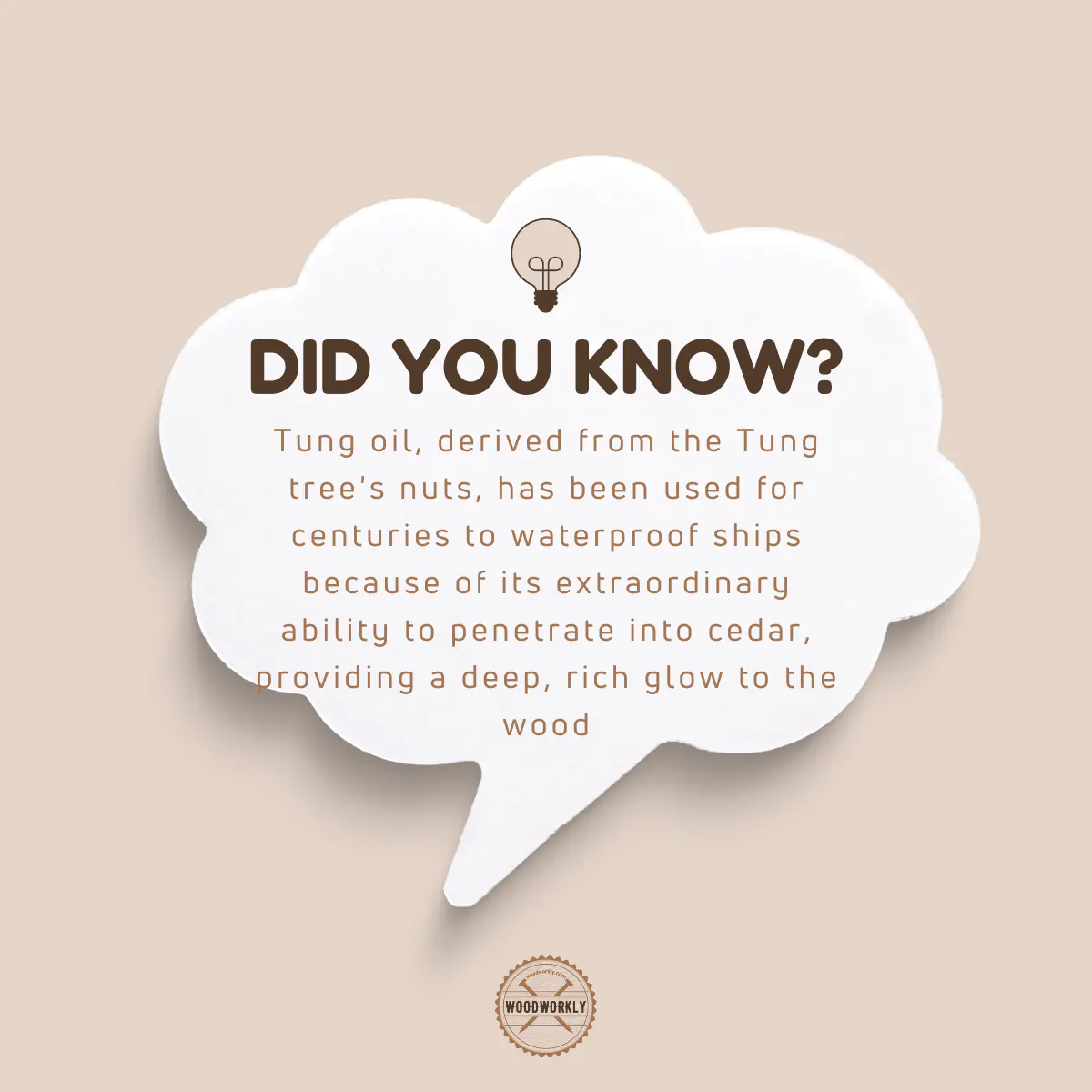
2. Thin The Oil
Now take the tung oil and pour the required amount into the plastic cup or glass jar. Then add an equal amount of mineral spirit on top of that and mix them slowly.
I know you’re curious about the effect of thinning the oil.
Thinning tung oil before the application will help the oil to penetrate easily through the cedar wood fibers.
Plus, thinned tung oil is easy to apply. This will boost the abruption rate of tung oil on cedar.
Tip:
When you are purchasing mineral spirit for thinning the tung oil. Never buy products that are marked as eco-friendly, or green because they’ll ruin your tung oil. Take the general ones.
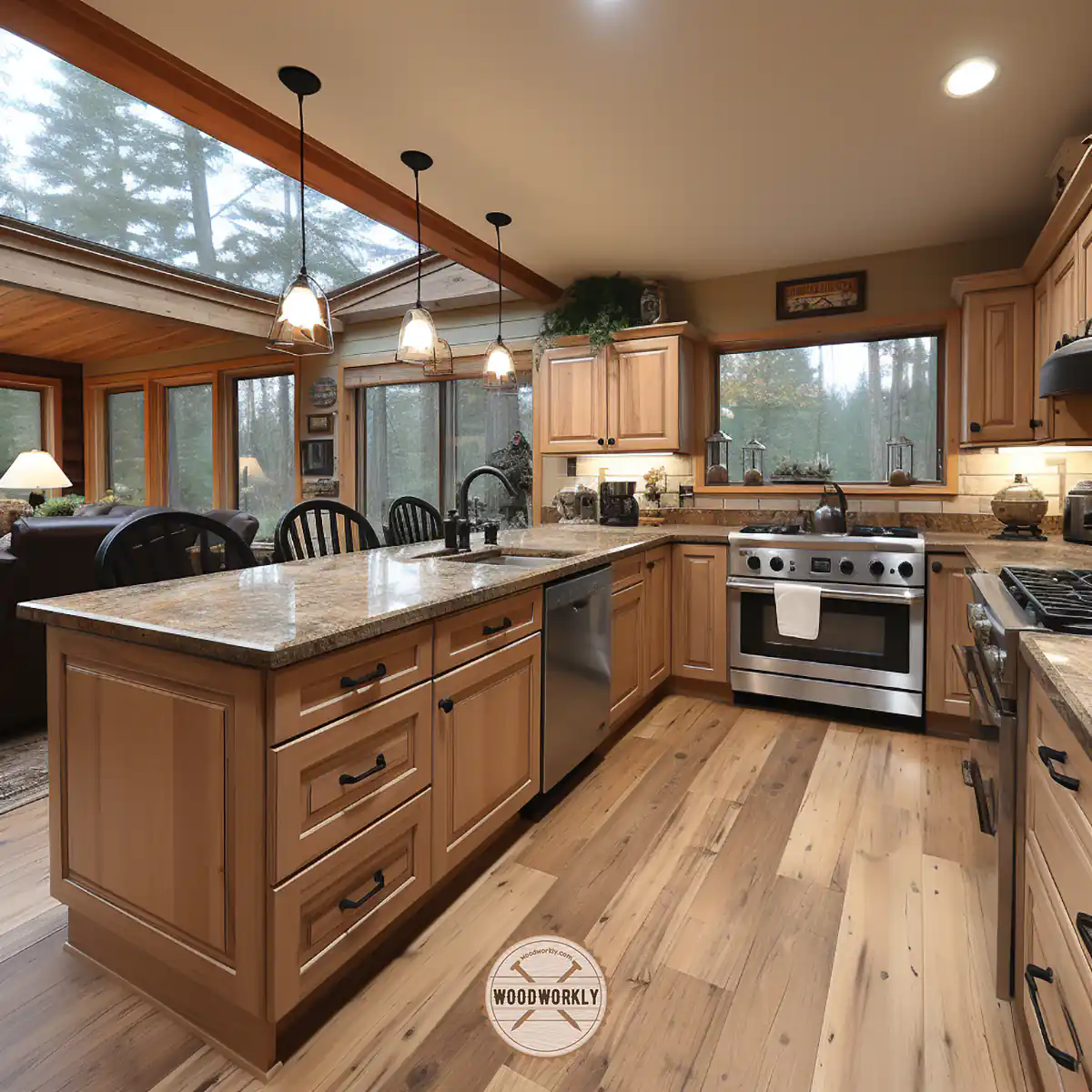
3. Apply the First Coat of Tung oil
Apply the very first coat of tung oil on the cedar wood surface with a bristle brush, sponge brush, or lint-free rag.
Apply tung oil generously, evenly, and uniformly throughout the cedar wood surface without missing any spots.
Plus, make sure to apply tung oil along the direction of the cedar wood grain to gain a nice appearance without getting blotches.
Unlike varnish, the purpose of applying tung oil is to saturate fiber cells with oil. Therefore, tung oil should apply liberally and it won’t sit on the surface as Varnish do.
Thinned tung oil easily absorbs into the wood.
During the first coat of tung oil, whole cedar wood surface fibers should be saturated deeply as possible.
At the end of applying the first coat, the surface should look wet, not puddled. Because puddled surfaces may result in blotches.
Puddle areas should wipe off with a damp cloth.
Within the first 30 minutes of applying the first coat of tung oil, cedarwood will be saturated, and you can wipe excess oils and bubbles during that time.
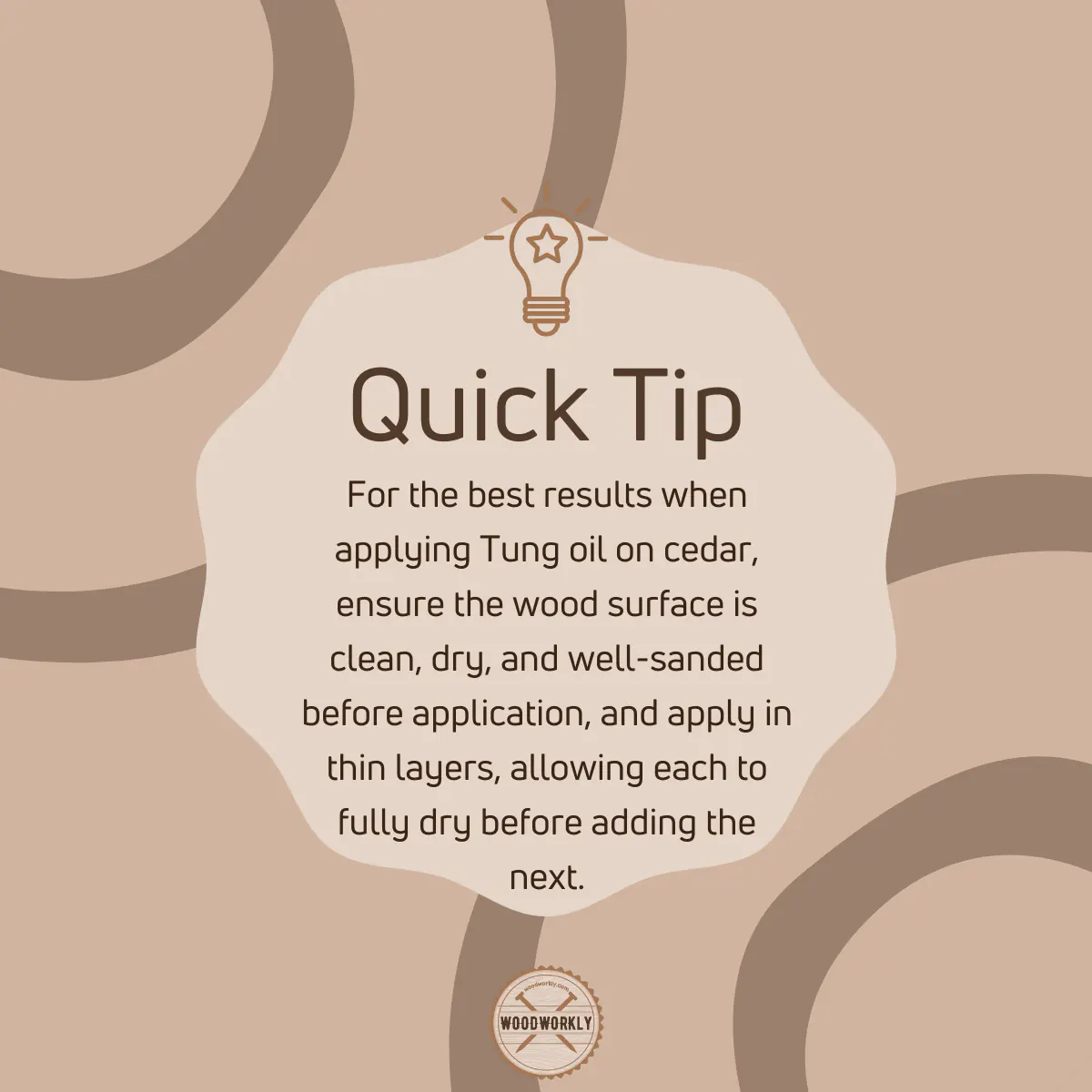
4. Let it Dry and Sand the Surface
After applying the first coat of tung oil on cedar let it dry for about 6 hours before going for the second coat.
After 45 minutes the first coat is well saturated with fiber cells and the surface is significantly dry.
Then sand the surface lightly with an abrasive finishing pad to knock off the dust nibs.
Better to use abrasive finishing pads for this light sanding after each coat rather than using sandpaper, they don’t clog up like sandpaper.
Plus, you can wash them out once in a while to make them last a long time.
Some folks prefer to use steel wool and that works too.
5. Apply More Coats of Tung Oil
Now move on to the second coat of tung oil.
Before applying the second coat, I recommend you wet sand the surface lightly with 220 grit sandpaper to get the fine pores of cedar to boost the natural contrast in the wood.
Make sure not to sand much deep because that can harm the first coat. Just a few swipes over the entire cedar wood are enough.
Better to use a sponge for the wet sanding because you can rinse it out with mineral spirit and it’ll be back to new.
Once you’re done with sanding wipe off the excess and let it dry.
Then apply the second coat of tung oil just like the techniques you followed during the first coat.
Repeat the same procedure for 5 – 8 coats to get the ideal tung oil finish on cedarwood. The last two coats of tung oil don’t need wet sanding.
The application time of tung oil is about 10 minutes.
Tips:
- Make sure to wipe off unabsorbed oil with a clean rag after the application of each coat to increase the efficiency of the curing process without getting the layer too thick.
- Around the third coat, you’ll probably notice some dull areas that didn’t take the oil well. Don’t worry about that! It is pretty normal and that means you need another coat or two.
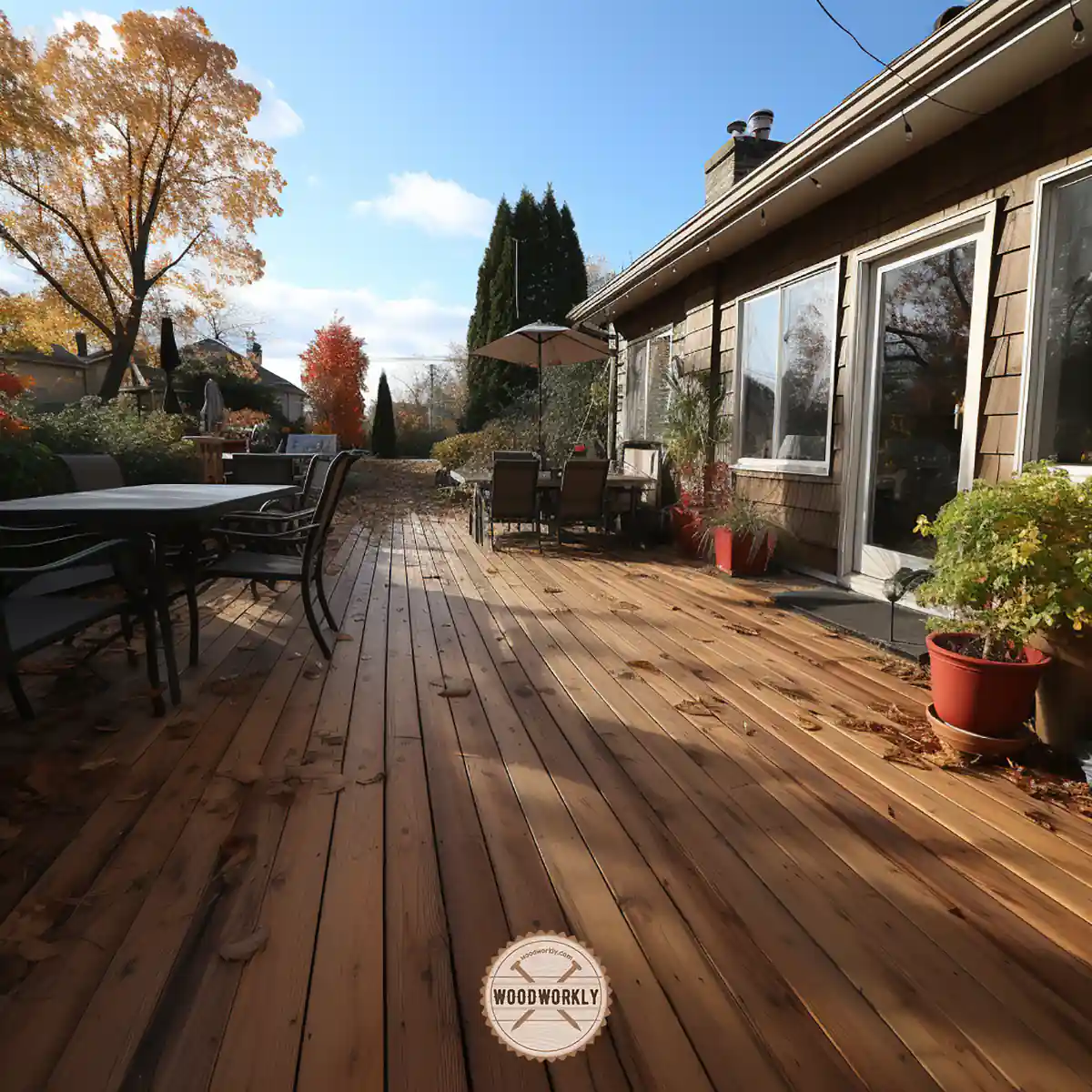
6. Let the Oil Dry and Cure Completely
After applying each coat of tung oil, let it dry for about 6 hours. Each coat will proceed the same way of application.
- Wipe on
- Wet sand
- Wipe off
- Let it dry
- Scuff it
- repeat
drying is so much important between each coat of tung oil to absorb the oil evenly into the wood.
The drying time of tung oil is 6 hours and the curing time of tung oil is 14 days.
After applying the final coat of tung oil, let the project sit for two weeks to cure the oil properly.
Usually, oil finishes cure slower than regular finishes. During those 14 days, you’ll get a nice, polished finish that is properly cured and dried.
Curing and drying of tung oil are totally different because after 6 hours of applying tung oil, you can touch the cedar surface and it doesn’t feel sticky.
But after a couple of weeks, it is cured to a very hard state. Therefore, letting the project for around 14 days for curing will result in great outcomes.
That’s all folks! Now you know how tung oil works on cedarwood and how to apply tung oil on cedar wood with a simple accurate method with many benefits.
Read to know the pros and cons of tung oil!
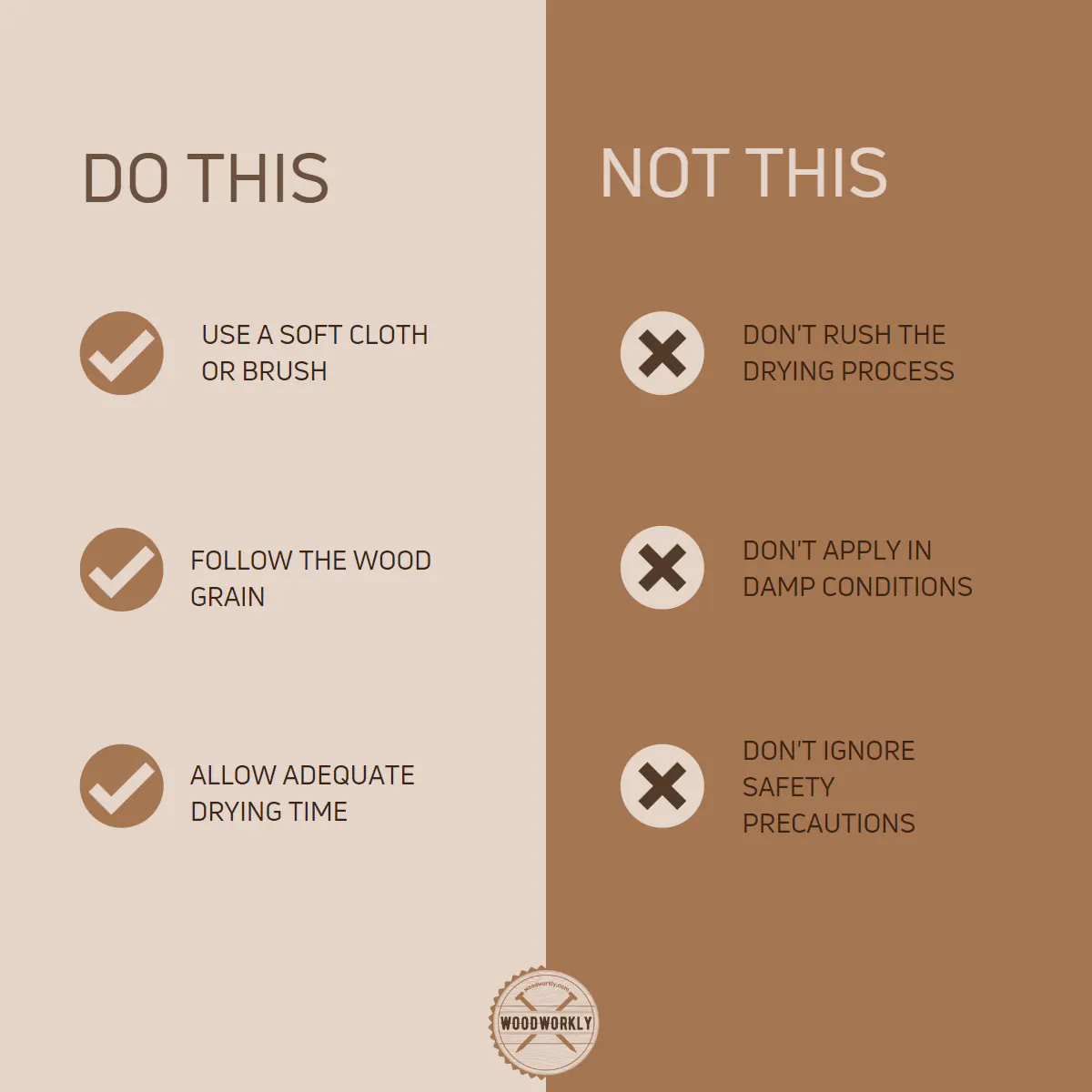
How Many Coats of Tung Oil on Cedar?
Apply minimum of 5 coats of tung oil on cedar. 5 – 8 coats of tung oil are ideal to achieve the look you want with a protective layer.
Make sure to dry between each coat and let the project cure for around 14 days for a better finish.
Is Tung Oil Waterproof?
Yes, Tung oil is 100% waterproof. Tung oil polymerize with atmospheric oxygen to form a water-resistant film that works as a protective layer on the wood.
Tung oil absorbs 12% of atmospheric oxygen to form waterproof skin that protects wooden surfaces.
Therefore, cedar woodworks and furniture that are finished with tung oil can be used in almost any environment.
But make sure to apply tung oil properly without missing any spots by following the procedure that we have talked about above.
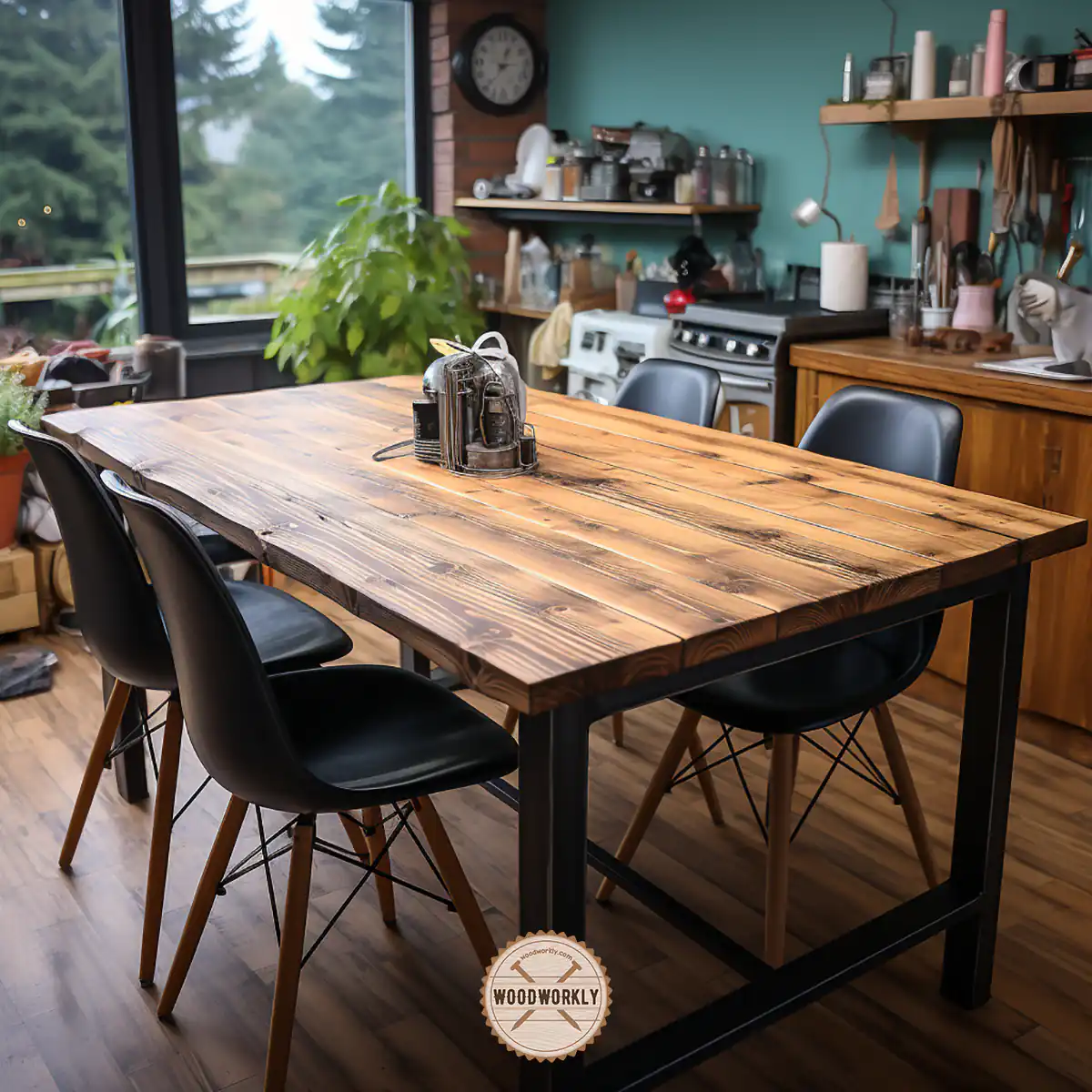
Can You Use Tung Oil on Exterior Cedar?
Yes, you can use tung oil on exterior cedar. Apply 5 – 6 coats of tung oil to make it waterproof and get protected it from outside elements.
When the wood doesn’t interact with the outside world due to tung oil coatings, you can easily use cedar furniture and woodworks in indoor and outdoor environments.
What Is the Best Tung Oil to Use On Cedar?
Several types of tung oil work best on cedar. They are,
- Minwax tung oil finish
- Cabot’s tung oil finish
- Hope tung oil
- Real Milk paint dark tung oil
Apart from using Tung oil, you can also consider Linseed oil for cedar wood furniture which gives promising results.
That’s it, folks! Now you know all you need to know about using tung oil on cedar.
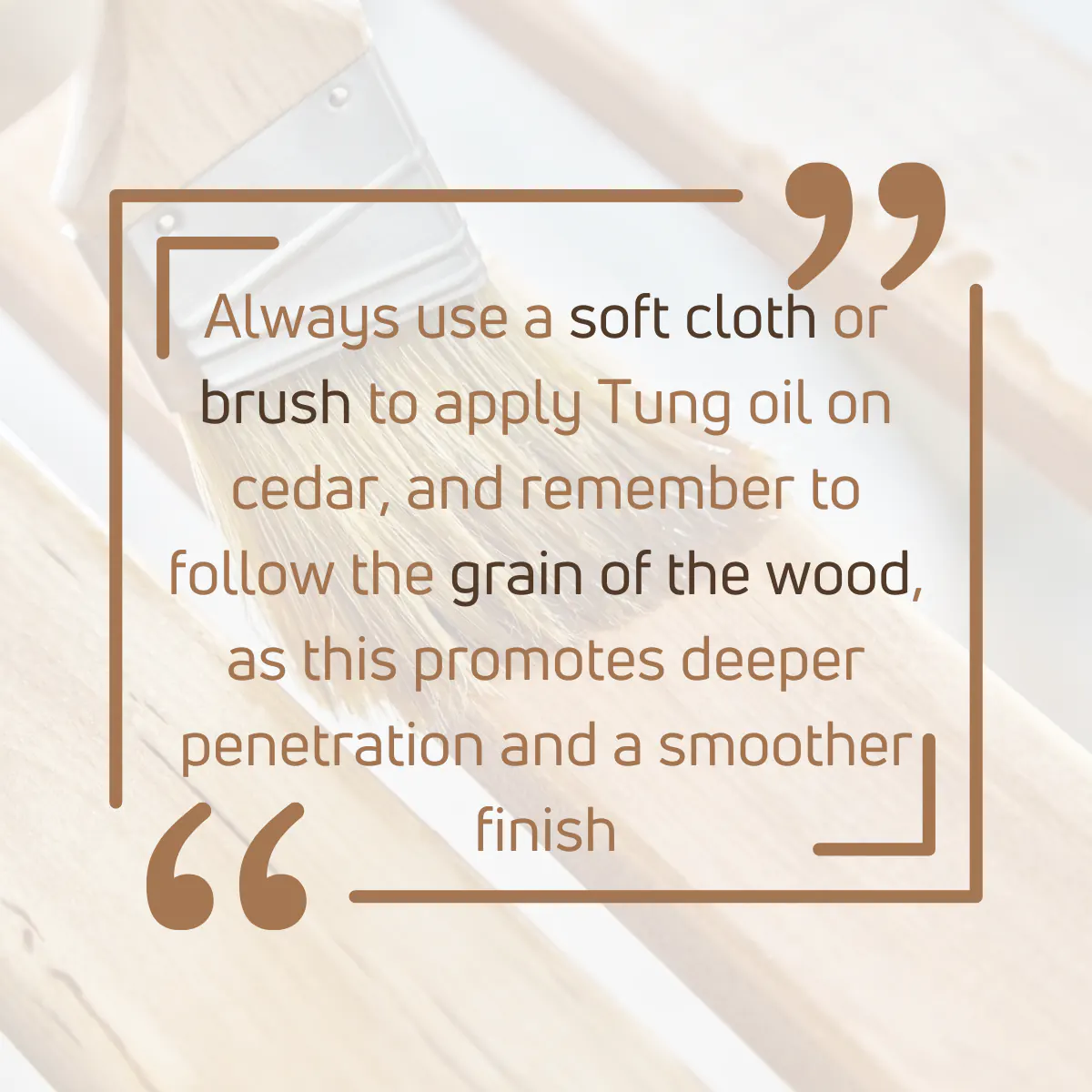
So, let’s answer some frequently asked questions.
FAQs
What is Tung oil and why is it used on Cedar wood?
Tung oil is a natural oil extracted from the seed of the Tung tree, and it’s commonly used on Cedar wood due to its ability to deeply penetrate the wood, enhancing its natural beauty and providing a strong, water-resistant finish.
How long does it take for Tung oil to dry on Cedar wood?
Generally, Tung oil takes approximately 24-48 hours to dry between coats on Cedar wood, but this can vary based on environmental factors like temperature and humidity.
Does Tung oil darken Cedar wood?
Tung oil can slightly darken Cedar wood over time, enhancing its natural color and grain, while providing a beautiful, rich, matte finish.
Can Tung oil prevent Cedar wood from graying?
Tung oil can slow down the graying process of Cedar wood by protecting it from UV light, but it won’t entirely prevent the natural aging process.
Is Tung oil safe for Cedar wood used in food preparation areas?
Yes, pure Tung oil is safe for Cedar wood used in food preparation areas, as it is food-safe once fully cured.
What is the difference between Tung oil and Danish oil for Cedar wood?
While both Tung oil and Danish oil can be used on Cedar wood, Tung oil provides a more durable, water-resistant finish, whereas Danish oil typically offers a softer finish but is easier to apply.
How to maintain Cedar wood finished with Tung oil?
Maintaining Cedar wood finished with Tung oil involves regular cleaning with a mild soap solution, checking for any signs of wear, and reapplying the oil as needed, typically once every 1-2 years.
Did I cover all you wanted to know about: Tung Oil On Cedar?
In this article we have deeply discussed can you use tung oil on cedar and how to apply tung oil on cedar using proper simple techniques.
By following the above procedure you’ll be able to get the ideal finish you wish.
Using Tung oil on Cedar wood enhances its natural beauty, providing a robust, water-resistant finish. Apply 3-4 coats for an ideal finish, allowing 24-48 hours drying time between coats. Tung oil can darken Cedar slightly, but it also helps slow the wood’s graying process and is food-safe when fully cured.
Furthermore, I’ve answered some frequently asked questions about using tung oil on cedar as well.
Hope you have gained a good piece of knowledge from this article about tung oil and how it works with cedarwood.
Make sure to practice the process you learned from this article with cedarwood to become a pro at wood finishing. Have fun in woodworking!
Hello Walter. I have a couple of reclaimed cedar posts from a barn that we are wanting to mount on our ceiling in our house. They are rough and we want to keep the rustic appearance to them. How would I go about applying the Tung oil to these posts? Do I need to delute the oil first, or just put in on straight out of the can? Is this the best product to use on this type of cedar? Thanks. Judy
Hello Judy,
Thank you for reaching out and for reading my article on using tung oil on cedar. It’s wonderful that you’re incorporating reclaimed cedar posts into your home for that rustic touch. Tung oil is indeed a great choice for cedar, especially if you’re looking to preserve its natural appearance while providing protection.
Applying Tung Oil to Reclaimed Cedar Posts:
1. Preparation:
Since the posts are rough and you want to maintain their rustic look, extensive sanding isn’t necessary. However, it’s still a good idea to do a light cleaning to remove any dust, dirt, or grime. A gentle brush-off or a wipe-down with a damp cloth can be sufficient. Allow the wood to dry completely before applying the oil.
2. Choosing the Tung Oil:
There are two types of tung oil available – pure tung oil and tung oil finishes (often mixed with other ingredients to aid in drying). Pure tung oil penetrates deeply and is excellent for preserving the natural look of the wood. Tung oil finishes are easier to apply and dry faster but might not penetrate as deeply. For your reclaimed cedar posts, pure tung oil might be more suitable if you’re okay with longer drying times and want maximum preservation.
3. Dilution:
For the first coat, diluting the tung oil can help it penetrate more deeply into the cedar. A common method is to mix the tung oil with a solvent like mineral spirits or turpentine in a 50/50 ratio. This step is especially helpful for rough, porous surfaces.
4. Application:
Apply the tung oil using a brush or a clean, lint-free rag. Given the rough texture of your posts, a brush might be more effective in getting the oil into all the crevices. Work in manageable sections, applying the oil liberally. Allow the oil to penetrate for about 20-30 minutes, then wipe off any excess oil with a clean rag. This step is crucial as any unabsorbed oil can become sticky.
5. Subsequent Coats:
After the first diluted coat, you can apply one or two more coats of undiluted tung oil for additional protection. Allow each coat to dry thoroughly before applying the next. The drying time can vary depending on the temperature and humidity, typically ranging from a few days to a week.
6. Curing Time:
Tung oil takes time to cure. It’s important to wait until it’s fully cured before handling the posts extensively. This process can take a few weeks.
7. Maintenance:
Tung oil finishes are relatively easy to maintain. You can reapply a coat as needed, typically every few years, depending on the wear and environmental conditions.
In conclusion, tung oil is a suitable choice for your cedar posts, especially for maintaining a natural, rustic look. It enhances the wood’s grain and provides protection without creating a glossy or artificial finish. Remember that patience is key with tung oil, both in terms of application and waiting for it to dry and cure.
If you have any more questions or need further advice, feel free to ask. Best of luck with your project!
Best Regards,
Walter